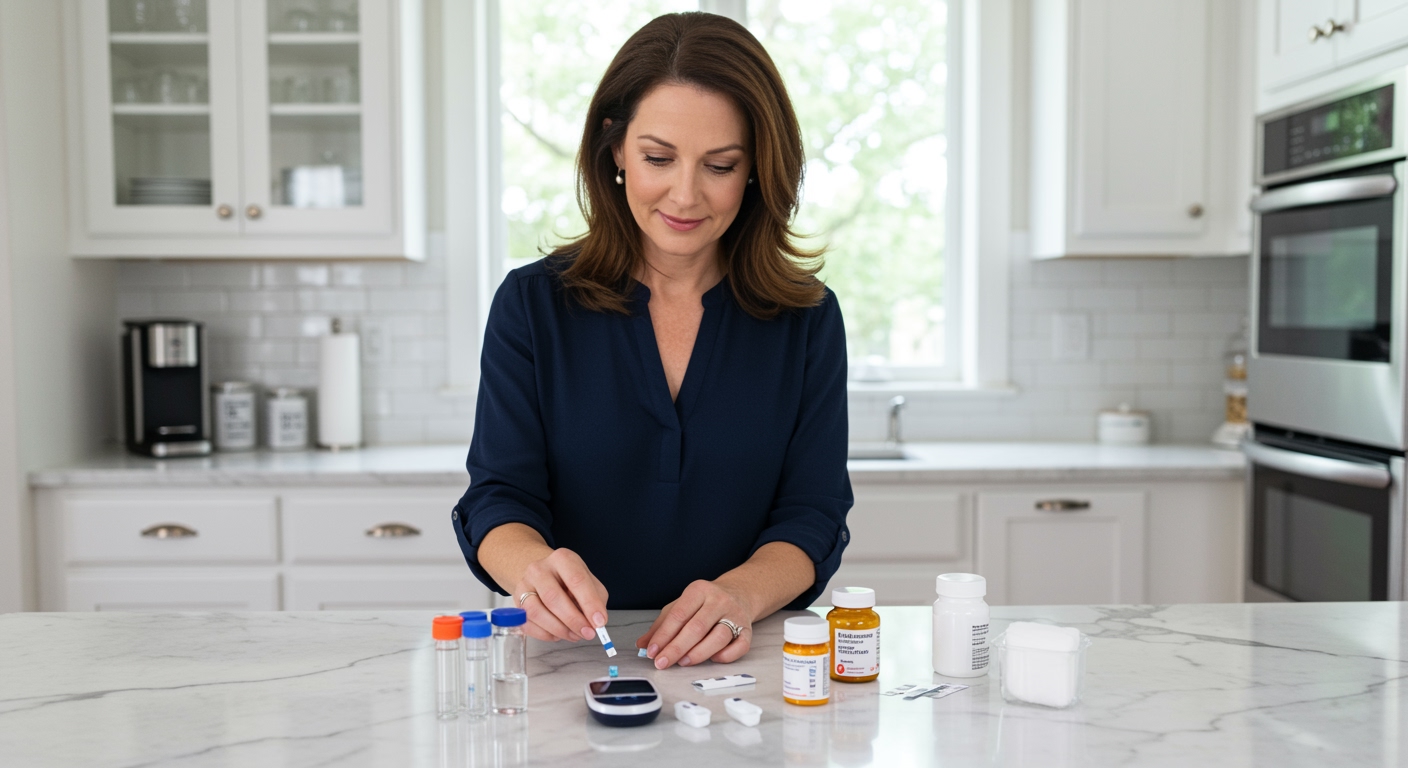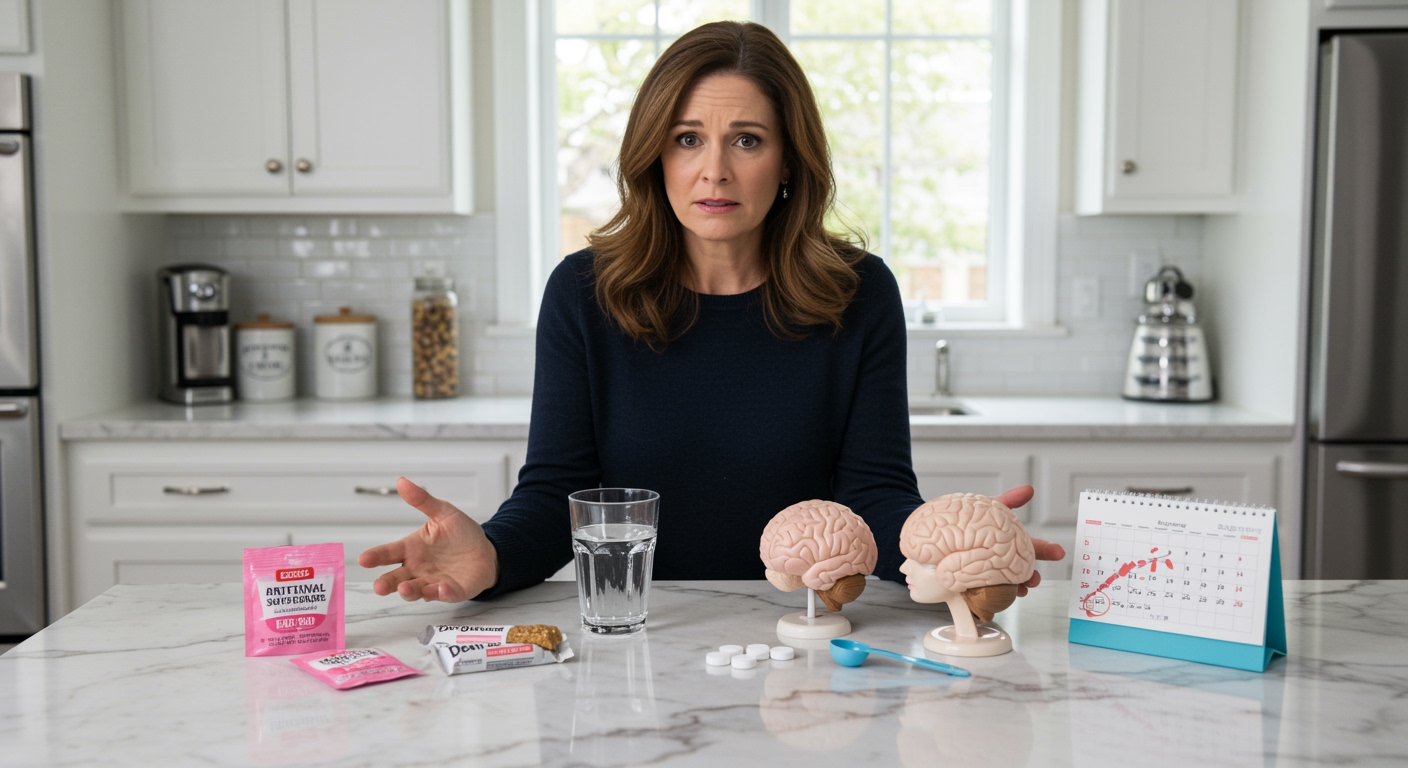✪ Key Highlight: Scientists discover tears mirror blood glucose levels while saliva reflects vitamin D status, eliminating painful needles.
Introduction
Millions of people with diabetes dread the daily finger pricks and blood draws that come with managing their condition.
A groundbreaking study published in Physiologia reveals that tears and saliva could replace painful blood tests for monitoring vitamin D and glucose levels in people with type 2 diabetes.
Hi, I’m Abdur, your nutrition coach and today I’m going to analyze this revolutionary research that could transform how we monitor our health without needles.
How Do Tears Compare To Blood Tests?
The research team discovered something remarkable when they compared tear glucose levels to traditional blood glucose measurements.
Tears showed an incredibly strong correlation with blood glucose readings, meaning they mirror what happens in your bloodstream almost perfectly.
This finding could revolutionize diabetes management because collecting tears is completely painless and non-invasive.
The glucose molecules in your tears come from the same source as blood glucose, which explains why the levels match so closely.
For people with diabetes who need to check their blood sugar multiple times daily, this could eliminate the constant finger pricking that many find uncomfortable and inconvenient.
✪ Fact: Tears contain the same glucose molecules as blood, making them perfect mirrors for blood sugar levels.
Can Saliva Really Show Vitamin D Status?
The study also explored whether saliva testing could reveal vitamin D levels without drawing blood.
Researchers found promising connections between saliva markers and vitamin D status in the body.
Vitamin D plays crucial roles beyond bone health, including fighting inflammation, boosting immune function, and helping your body process blood sugar properly.
Low vitamin D levels connect to serious health problems like heart disease, autoimmune conditions, diabetes, and metabolic syndrome.
Currently, doctors rely on blood tests to measure 25-hydroxyvitamin D, the storage form of vitamin D that indicates your overall status.
If saliva tests prove reliable, people could monitor their vitamin D levels at home without clinic visits or needle sticks.
✪ Pro Tip: Vitamin D deficiency affects over 40% of Americans, making convenient testing methods critically important.
What Makes These Tests So Accurate?
The key to accurate saliva and tear testing lies in detecting specific biomarkers that reflect what happens in your blood.
Scientists focus on compounds like 1,5-anhydroglucitol (1,5-AHG), which appears in much lower concentrations in saliva compared to blood.
This challenge requires highly sensitive testing methods that can detect tiny amounts of these important markers.
New enzymatic-based assays make this possible while keeping costs lower than traditional blood tests.
A 2020 study found that salivary 1,5-AHG levels correlated positively with blood levels and negatively with fasting glucose and HbA1c.
HbA1c measures your average blood sugar over the past 2-3 months, making it a crucial diabetes monitoring tool.
These correlations suggest saliva tests could help screen for diabetes and reduce the need for more invasive procedures like oral glucose tolerance tests.
✪ Note: Advanced enzymatic assays can now detect biomarkers in saliva at concentrations 100 times lower than blood.
Could This Prevent Diabetes Before It Starts?
Dr. Jonathan Little from UBC Okanagan explains how these tests could identify diabetes risk before blood sugar levels rise.
Hyperinsulinemia, a condition where your body produces too much insulin, often develops years before type 2 diabetes appears.
Your pancreas releases extra insulin to keep blood sugar normal when your cells become insulin resistance.
Eventually, your pancreas cannot keep up with the demand, and blood sugar levels start climbing toward diabetes.
Saliva tests for insulin could catch this early stage, giving people time to make lifestyle changes before diabetes develops.
Early detection means you could start eating better, exercising more, and managing stress before your condition becomes irreversible.
✪ Fact: Insulin resistance can develop 10-15 years before type 2 diabetes diagnosis, creating a crucial prevention window.
What Are The Current Limitations?
While these findings sound promising, experts caution that more research is needed before these tests become widely available.
The current study was a pilot investigation with a small number of participants, so larger studies must confirm these results.
Scientists need to ensure the tests work accurately across different populations, ages, and health conditions.
Factors like medications, dehydration, infections, or other health conditions might affect saliva and tear composition.
The testing equipment must also become more portable and user-friendly for home use.
Regulatory agencies like the FDA will need to approve these tests before doctors can use them in clinical practice.
✪ Note: Clinical validation typically takes 3-5 years before new diagnostic tests reach widespread medical use.
The Bottom Line
This research represents a significant step toward making health monitoring more comfortable and accessible for everyone.
Simple health checks should never require painful procedures when better alternatives exist.
I encourage you to share your thoughts about needle-free testing in the comments below, especially if you manage diabetes or have concerns about vitamin D levels.
References
At NutritionCrown, we use quality and credible sources to ensure our content is accurate and trustworthy. Below are the sources referenced in creating this article:
- News Medical: Can saliva and tears replace blood tests for vitamin D and glucose
- Pharmacy Times: Non-invasive saliva tests could offer early clues for diabetes and obesity risk
- PMC: Saliva as a diagnostic tool for diabetes and obesity
- Greater Good: Could tears and saliva replace blood tests
- News Medical: Could vitamin D be the missing link in managing type 2 diabetes





